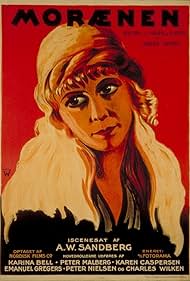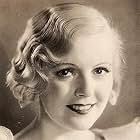Policeman Thor Brekanæs is found murdered near his farm and the hunt for the killer is on.Policeman Thor Brekanæs is found murdered near his farm and the hunt for the killer is on.Policeman Thor Brekanæs is found murdered near his farm and the hunt for the killer is on.
- Director
- Writer
- All cast & crew
- Production, box office & more at IMDbPro
Storyline
Featured review
One Nordisk Danish production on the first day of the virtual part of the 40th Pordenone Silent Film Festival ("The Joker" (1928)) wasn't enough for me, it appears. Fortunately, the festival's website has a silent stream section of some past restorations that's free (although seemingly not updated too often), and "The House of Shadows," from the 36th Le Giornate del Cinema Muto, as the festival is otherwise known, back in 2017 is one of the uploads at the moment. Fortunately, too, the other two films there, as of this writing, the Italian "The Betrothed" (1922) and especially the Soviet "New Babylon" (1929), are better.
This sort of old-fashioned melodrama can get excruciating for me to sit through. The depiction of the mentally-disabled Aslak was especially atrocious. I swear if I see another movie that uses a disabled or poor person to sacrifice for a central romance between other characters, let alone couching it in evangelicalism as here, I'm going to... well, be more annoyed. Perhaps the most famous silent film example of such a plot is Mary Pickford's "Stella Maris" (1918), and I hated it there, too. Simply calling it ableism, classism, racism, or sexism, as the case may be, doesn't fully get at how it's just bad, dated writing. And, this is coming from someone who has spent a good chunk of life seeing literally thousands of silent films, hundreds of which I've posted reviews for on this website.
The plot eventually turning into a whodunit doesn't end up helping, either, as uninterested as I was in the romance of adoptive siblings needlessly submitting to their father's terrorizing concern over scandal. And, not of any scandal per se of siblings marrying, mind you; that's incidental. This is a father who screams into the night sky, fists clenched, inquiring who has brought him dishonor even though he already believes it's the revenge of his dead wife who apparently he drove to suicide. Anyways, about that murder mystery, which I hoped was to be a relief from the melodrama. Alas, an experienced viewer will know very well who's guilty long before it's revealed. I had two suspects, and when everything seemed to indicate the other one initially, I knew it had to be the other suspect.
So, the narrative stinks, but how about the actual shadows of the Brekanæs House? Well, the interior cinematography is decent. Indeed, it's filled with shadows. I wasn't sure what the business with the harp was about, but the ultimate revelation with the organ is ridiculous. Outdoors, however, the dark lighting is another matter. The landscapes are lovely and play a part in the picture akin to Swedish cinema at the time (and it's set in Norway), but the filmmakers here seemed to intentionally film on cloudy days or well before or after the magic hour, which would seem to be on theme, but it looks bad--more like a film from 1914 than one from 1924. There are long shots of characters with their faces darkened in silhouette that are plain ugly, as well as sometimes not even in keeping with the theme, such as the reunion of the kissing siblings, which isn't supposed to be a gloomy affair at first--at least not until the love triangle forms. The picture's opening with the mother entrapped by the father in that murky house until her pregnancy delivers his son is a relatively strong and horrifying beginning, but things continue to go increasingly poorly thereafter. Oh well, not all Danish silent cinema can be Asta Nielsen and Carl Theodor Dreyer.
This sort of old-fashioned melodrama can get excruciating for me to sit through. The depiction of the mentally-disabled Aslak was especially atrocious. I swear if I see another movie that uses a disabled or poor person to sacrifice for a central romance between other characters, let alone couching it in evangelicalism as here, I'm going to... well, be more annoyed. Perhaps the most famous silent film example of such a plot is Mary Pickford's "Stella Maris" (1918), and I hated it there, too. Simply calling it ableism, classism, racism, or sexism, as the case may be, doesn't fully get at how it's just bad, dated writing. And, this is coming from someone who has spent a good chunk of life seeing literally thousands of silent films, hundreds of which I've posted reviews for on this website.
The plot eventually turning into a whodunit doesn't end up helping, either, as uninterested as I was in the romance of adoptive siblings needlessly submitting to their father's terrorizing concern over scandal. And, not of any scandal per se of siblings marrying, mind you; that's incidental. This is a father who screams into the night sky, fists clenched, inquiring who has brought him dishonor even though he already believes it's the revenge of his dead wife who apparently he drove to suicide. Anyways, about that murder mystery, which I hoped was to be a relief from the melodrama. Alas, an experienced viewer will know very well who's guilty long before it's revealed. I had two suspects, and when everything seemed to indicate the other one initially, I knew it had to be the other suspect.
So, the narrative stinks, but how about the actual shadows of the Brekanæs House? Well, the interior cinematography is decent. Indeed, it's filled with shadows. I wasn't sure what the business with the harp was about, but the ultimate revelation with the organ is ridiculous. Outdoors, however, the dark lighting is another matter. The landscapes are lovely and play a part in the picture akin to Swedish cinema at the time (and it's set in Norway), but the filmmakers here seemed to intentionally film on cloudy days or well before or after the magic hour, which would seem to be on theme, but it looks bad--more like a film from 1914 than one from 1924. There are long shots of characters with their faces darkened in silhouette that are plain ugly, as well as sometimes not even in keeping with the theme, such as the reunion of the kissing siblings, which isn't supposed to be a gloomy affair at first--at least not until the love triangle forms. The picture's opening with the mother entrapped by the father in that murky house until her pregnancy delivers his son is a relatively strong and horrifying beginning, but things continue to go increasingly poorly thereafter. Oh well, not all Danish silent cinema can be Asta Nielsen and Carl Theodor Dreyer.
- Cineanalyst
- Oct 2, 2021
- Permalink
Details
- Release date
- Country of origin
- Language
- Also known as
- Himmelens hämnd
- Production company
- See more company credits at IMDbPro
- Runtime1 hour 43 minutes
- Color
- Sound mix
- Aspect ratio
- 1.33 : 1
Contribute to this page
Suggest an edit or add missing content










